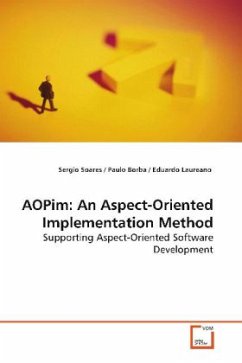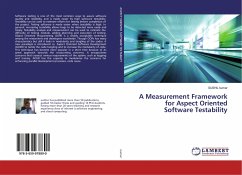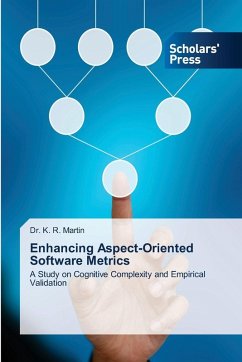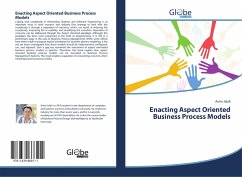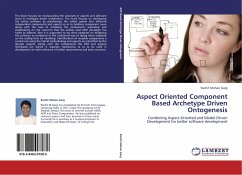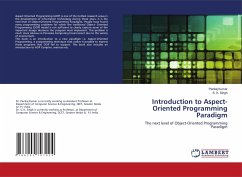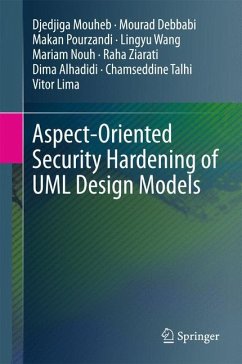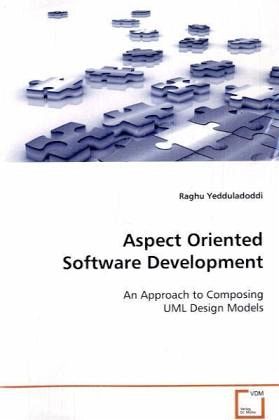
Aspect Oriented Software Development
An Approach to Composing UML Design Models
Versandkostenfrei!
Versandfertig in 6-10 Tagen
39,99 €
inkl. MwSt.

PAYBACK Punkte
20 °P sammeln!
The aspect-oriented modeling (AOM) approach supportsseparation of crosscutting features from otherfeatures during design. An aspect-oriented designconsists of a primary (base) model and a setof aspect models. A primary model describes thedominant structure of a design and an aspect modeldescribes a feature that crosscuts the dominantstructure. The aspect models and the primary modelmust be composed to obtain a system view thatintegrates features described by the models.Model composition involves merging aspect classmodels with primary class models and incorporatingsequences of interactions spe...
The aspect-oriented modeling (AOM) approach supports
separation of crosscutting features from other
features during design. An aspect-oriented design
consists of a primary (base) model and a set
of aspect models. A primary model describes the
dominant structure of a design and an aspect model
describes a feature that crosscuts the dominant
structure. The aspect models and the primary model
must be composed to obtain a system view that
integrates features described by the models.
Model composition involves merging aspect class
models with primary class models and incorporating
sequences of interactions specified in aspect models
into primary sequence models.
Composition directives can be used to alter how a
signature based general-purpose composition procedure
composes models in the case where it is known or
expected that the procedure will produce incorrect
results.
The interaction model composition technique developed
can be used for composing aspect and primary sequence
models.
The class model and sequence model composition
techniques are applied in pilot studies to
demonstrate the usage of the composition techniques.
separation of crosscutting features from other
features during design. An aspect-oriented design
consists of a primary (base) model and a set
of aspect models. A primary model describes the
dominant structure of a design and an aspect model
describes a feature that crosscuts the dominant
structure. The aspect models and the primary model
must be composed to obtain a system view that
integrates features described by the models.
Model composition involves merging aspect class
models with primary class models and incorporating
sequences of interactions specified in aspect models
into primary sequence models.
Composition directives can be used to alter how a
signature based general-purpose composition procedure
composes models in the case where it is known or
expected that the procedure will produce incorrect
results.
The interaction model composition technique developed
can be used for composing aspect and primary sequence
models.
The class model and sequence model composition
techniques are applied in pilot studies to
demonstrate the usage of the composition techniques.



